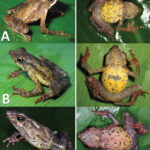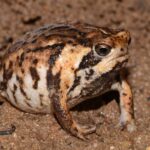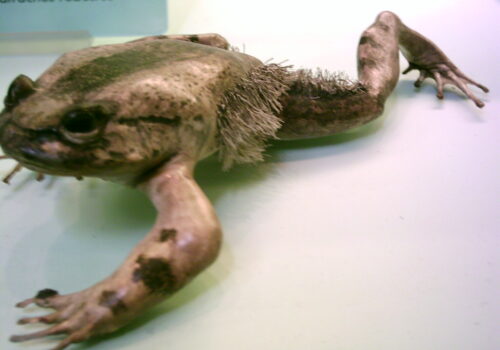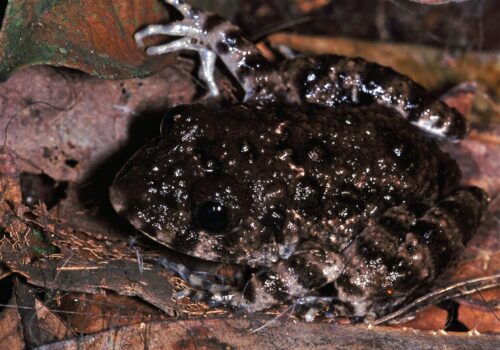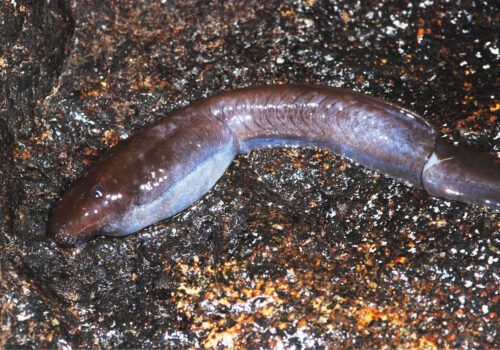- Exploring Leptopelis montanus: The Enigmatic Mountain Forest Tree Frog
- Introduction: Hidden Beauty of the Highlands
- Taxonomy and Classification
- Natural Habitat: Mist-Shrouded Realms of the Mountain Ranges
- Physical Characteristics: Master of Camouflage and Adaptation
- Behavior and Life Cycle: Secrets of an Arboreal Lifestyle
- Ecological Role: Key Players in a Delicate Balance
- Threats and Conservation Status: Navigating Troubled Waters
- Cultural and Scientific Significance: Bridging Tradition and Discovery
- Conclusion: Preserving the Melody of the Montane Forests
Exploring Leptopelis montanus: The Enigmatic Mountain Forest Tree Frog#
Introduction: Hidden Beauty of the Highlands#
Amidst the lush, cloud-wrapped forests of the East African highlands, nature enthusiasts and scientists alike have long been captivated by a discreet yet fascinating amphibian: Leptopelis montanus, commonly known as the Mountain Forest Tree Frog. Sporting subtle hues of olive-green and delicate patterns dancing across its damp skin, this elusive frog easily blends into its verdant surroundings. Its scientific moniker, derived from Greek—’Lepto’ meaning slender or delicate, and ‘pelis’ implying mud or clay—aptly reflects its graceful, slender physique and earthy tones.
A rarely spotlighted member of Africa’s amphibian diversity, Leptopelis montanus represents more than just natural beauty. As musk-operative sentinels of delicate mountain ecosystems, their presence paints an essential portrait of ecosystem health. But beyond its ecological significance, what makes this modest, olive-hued native truly extraordinary might surprise even seasoned naturalists: the unique vocalizations echoing through misty woodlands during damp evenings, known locally as the ‘whispering chorus’.
Taxonomy and Classification#
Leptopelis montanus forms part of the Arthroleptidae family, a distinct group comprising known bush frogs and tree frogs across Sub-Saharan Africa. Initially described by renowned British herpetologist George Albert Boulenger in 1909, it resides within the genus Leptopelis, which comprises approximately 53 extant species widespread throughout the continent. Closely allied species within the same genus, such as Leptopelis parkeri and Leptopelis uluguruensis, share the montane habitats, with subtle morphological differences differentiating their niche adaptations.
While taxonomists have reaffirmed its classification, genetic studies continue elucidating hidden lineages within this intriguing species, highlighting East Africa’s biogeographical complexity and the importance of conserving genetic diversity.
Natural Habitat: Mist-Shrouded Realms of the Mountain Ranges#
To fully appreciate Leptopelis montanus, imagine trekking through dense montane forest cloaked in perpetual mist, rich with moss-covered trees, dripping epiphytes, and a spongy carpet of leaf matter underfoot. These cloud forests occur at elevations ranging between 1500 and 3000 meters, particularly prevalent across Tanzania’s Eastern Arc Mountains, the Southern Highlands, and select mountain ranges bordering Kenya’s highlands.
These cool, moist environments offer the ideal refuge for this moderately sized arboreal amphibian. The climate, characterized by steady rainfall, humid microclimates, and cool temperatures, fosters thriving populations of insects, thereby catering abundantly to the Mountain Forest Tree Frog’s dietary requirements. The dense foliage and retained moisture in these forests provide not only abundant food sources but essential cover against predators and help regulate moisture loss through their sensitive skin.
Physical Characteristics: Master of Camouflage and Adaptation#
Leptopelis montanus, typical of its genus, demonstrates remarkable adaptations suited to arboreal life. Adults measure between 35–50 millimeters, exhibiting a slender build suitable for climbing and navigating along branches and leaves. Their powerful hind limbs end in enlarged adhesive toe pads, a unique evolutionary feature enhancing their agile tree-hopping capabilities. This adaptation enables them to execute astonishing leaps and to cling effortlessly to slippery, rain-wet foliage.
Coloration varies subtly across individuals—from pale green to olive-brown and grey—with many displaying distinct dark markings or blotches that break up their outline. Such cryptic patterning effectively camouflages them amidst leaves and moss-covered surfaces, minimizing detection by potential predators and maximizing chances of a successful hunt.
The skin texture of Leptopelis montanus is smooth, yet always damp, an adaptation essential to its respiratory needs. Like other amphibians, this species relies significantly on cutaneous respiration—breathing directly through its skin—adding further critical importance on moist habitats.
Behavior and Life Cycle: Secrets of an Arboreal Lifestyle#
Feeding Habits and Predation Techniques#
As largely crepuscular and nocturnal hunters, Mountain Forest Tree Frogs begin their quests for prey shortly after sunset, when insect activity peaks. Possessing keen eyesight attuned to low light and twilight conditions, these tree frogs ambush their prey—primarily insects such as moths, flies, and small beetles—with precision swift leaps and swift tongue flicks, consuming them whole. This dietary simplicity belies an ecological role integral to their habitats’ insect population regulation.
Reproduction and Tadpole Development#
With the onset of rainy seasons—usually from March-May and again from October-December—the mountain forest resounds nightly with distinctive call choruses, marking the onset of breeding activities. Male frogs take position on foliage and branches overhanging pools, streams, and temporary water bodies, employing their melodious and soft whistle-like vocalizations both to attract females and repel rivals.
After courtship, females deposit gelatinous egg clusters strategically suspended on plants over shallow waters or ephemeral pools. Their positioning protects eggs from aquatic predators while allowing tadpole emergence directly into the water below. The larvae develop swiftly in these nutrient-rich mountain streams and ponds, transforming into juvenile frogs within a matter of weeks or months, depending heavily on environmental variables and food availability.
Ecological Role: Key Players in a Delicate Balance#
Leptopelis montanus plays a subtle yet critical ecological role within montane ecosystems by controlling insect populations that otherwise could upset vegetational dynamics or spread disease. As an important prey source as well, they sustain predator populations such as snakes, birds, and larger amphibians. Furthermore, these frogs function effectively as indicators of regional ecological health, their population dynamics often reflecting shifts in local habitats’ ecological balance.
Threats and Conservation Status: Navigating Troubled Waters#
Regrettably, like many amphibians, the Mountain Forest Tree Frog faces escalating population pressures resulting from deforestation, agriculture encroachment, illegal logging, and habitat fragmentation. Rising global temperatures and shifting rainfall patterns threaten the moist montane habitats critical to their survival, rendering the species increasingly vulnerable to ecological stress.
The International Union for Conservation of Nature (IUCN) currently classifies Leptopelis montanus as ‘Vulnerable,’ emphasizing the urgent need for targeted conservation action. Disease, particularly chytridiomycosis—an amphibian fungal infection devastating to sensitive frog populations worldwide—is also emerging as a pressing threat, making comprehensive research and active monitoring essential conservation priorities.
Efforts to preserve their habitats include protected area establishment, sustainable land management practices, and local community education, supporting residents who can safeguard biodiversity for future generations.
Cultural and Scientific Significance: Bridging Tradition and Discovery#
In the mountainous communities of Eastern Africa, frogs hold spiritual and traditional symbolism, connected deeply to cycles of rain, fertility, and renewal. Though not prominently singled out culturally, frogs including species like Leptopelis montanus often feature indirectly in local folklore and traditional ecological knowledge, reinforcing respect toward natural ecosystems among indigenous cultures.
Scientifically, the species has fostered greater understanding about amphibian adaptability, speciation, and environmental sensitivity. Researchers studying these populations provide crucial data for understanding broader mountain biodiversity and the intricate network of ecological relationships holding montane forests in balance.
Conclusion: Preserving the Melody of the Montane Forests#
Quietly inhabiting the mists high above busy human settlements, Leptopelis montanus embodies the intrinsic beauty and complexity of Africa’s mountain forest ecosystems. Beyond their enchanting calls and harmonious presence, safeguarding this species means preserving a delicate ecological balance, sustaining landscape resilience, and protecting biodiversity across these critical montane landscapes.
As admirers and stewards of nature, we bear responsibility to amplify awareness, support conservation actions, and foster engagement that ensures future generations may still hear the gentle whispers emanating from mist-draped forests. Together, we can keep the chorus alive—the ensemble of life that sings throughout the mountain highlands, with the humble Mountain Forest Tree Frog performing a quiet, unforgettable melody.










